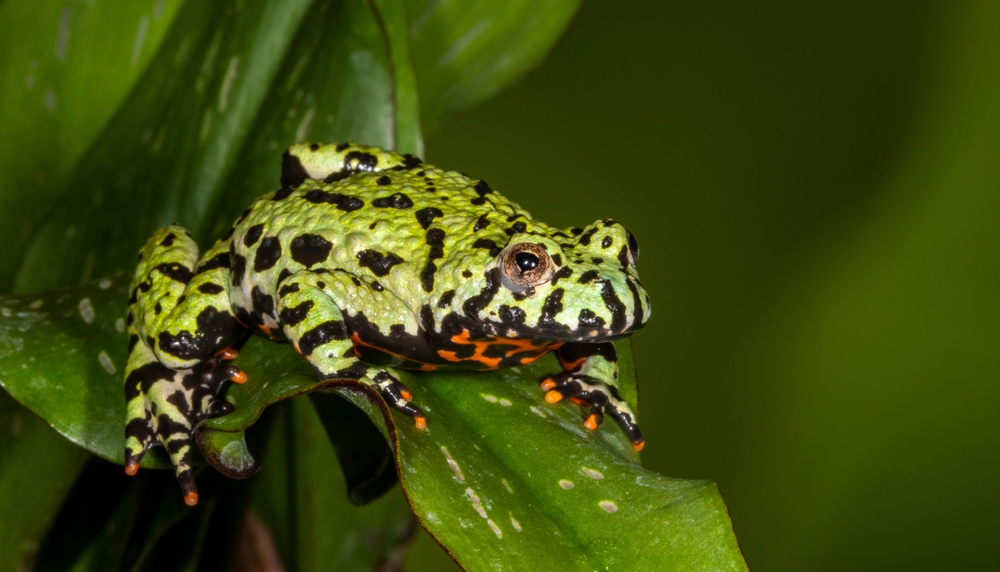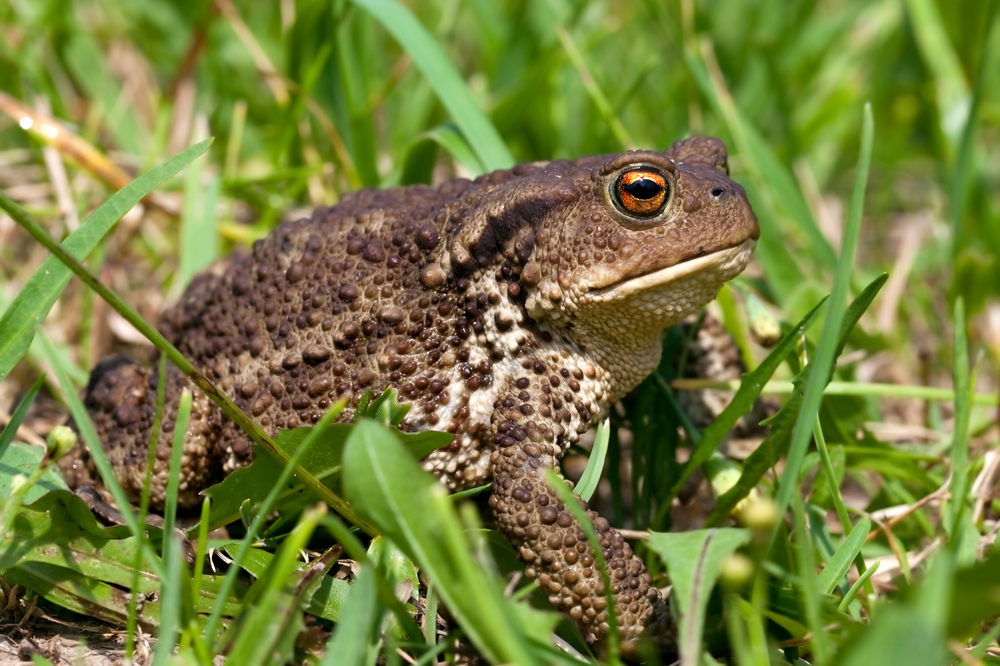Uniqueness
Aposematic Coloration:
Fire-bellied toads (Bombina spp.) are instantly recognizable for their vivid red, orange, or yellow bellies, contrasted with black blotches. This striking coloration serves as a classic example of aposematism—a warning signal to predators that the toad is toxic or unpalatable. It’s an uncommon but highly effective trait among amphibians.
Unken Reflex (Defensive Display):
When threatened, fire-bellied toads perform the unken reflex—a unique defensive posture where the toad arches its back, raises its limbs, and exposes its brightly colored belly. This display is a non-violent but highly visual deterrent designed to startle or discourage would-be predators.
Skin Toxins:
Their skin secretes mild toxins (bombesins) that irritate mucous membranes and deter ingestion. Though harmless to humans in small contact, it can sicken small predators. Their toxins are also being studied for medical potential, including antimicrobial and antitumor properties.
Heart-shaped Pupils:
Fire-bellied toads are one of the few amphibians with heart-shaped or triangular pupils, giving them a distinct and almost otherworldly facial appearance. This feature is both aesthetic and functional, aiding in vision above and below water.
Semi-Aquatic Lifestyle:
Unlike many toads, fire-bellied toads are highly aquatic, spending most of their lives in or near shallow ponds, marshes, and slow-moving streams. They’re adept swimmers and require permanent or seasonal water bodies for breeding and foraging.
Vocalization Without Vocal Sacs:
Males produce musical, melodic trills to attract mates during breeding season. Interestingly, they lack external vocal sacs, making their underwater calls softer and subtler than those of many frogs and toads.
Summary:
Fire-bellied toads are truly unique among amphibians. From their flamboyant belly colors and unken reflex to their heart-shaped pupils and aquatic nature, they combine beauty with biological function. Their bold appearance isn’t just for show—it’s a vital survival strategy backed by chemical defense, behavioral tactics, and ecological versatility.




































































